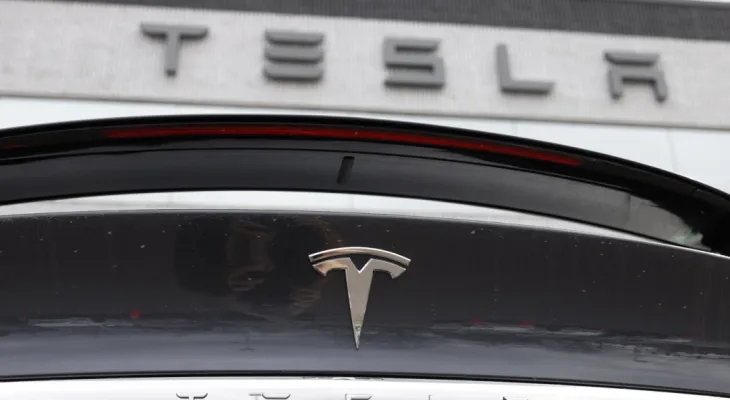Search here
Newspaper
Search here

Arab Canada News
News

Published: December 13, 2023
Tesla is recalling nearly all vehicles sold in the United States, more than 2 million cars, to update software and fix a defective system that is supposed to ensure drivers' attention when using Autopilot.
Documents released by U.S. safety regulators on Wednesday say the update will increase warnings and alerts for drivers and will even restrict areas where basic versions of Autopilot can operate.
The recall comes after a two-year investigation by the National Highway Traffic Safety Administration into a series of crashes that occurred while using the partially automated driving system, some of which were fatal.
The agency says its investigation found that Autopilot’s method of ensuring drivers' attention may be inadequate and could lead to "foreseeable misuse of the system."
The documents say the added controls and alerts "will encourage the driver to maintain their ongoing responsibility while driving," but safety experts said that although the recall is a good step, it still places responsibility on the driver and does not solve the fundamental problem that Tesla’s automated systems struggle to detect obstacles in their path and stop for them.
The recall includes Model Y, S, 3, and X vehicles produced between October 5, 2012, and December 7 of this year, with the update scheduled to be sent to some affected vehicles on Tuesday, and to the rest later.
Tesla shares fell more than 3% on Wednesday.
Autopilot includes features called Autosteer and Traffic Aware Cruise Control, with Autosteer intended for use on limited-access highways when it does not work with a more advanced feature called Autosteer on city streets.
This software update will limit where Autosteer can be used. The recall documents say: "If the driver tries to activate Autosteer when conditions for engagement are not met, the feature will alert the driver that it is not available through visual and audible alerts, and Autosteer will not engage."
Depending on Tesla devices, the added controls include "increased saliency" of visual alerts, simplifying how to turn Autosteer on and off, additional checks on whether Autosteer is used outside controlled access roads and when approaching traffic controls, and documents say the driver may be prevented from using Autosteer if they repeatedly fail to "show continued and sustained driving responsibility."
According to recall documents, agency investigators met with Tesla starting in October to explain "preliminary conclusions" about fixing the monitoring system; Tesla disagreed with the agency’s analysis but agreed to the recall on December 5 in an effort to resolve the investigation.
Advocates for vehicle safety have long called for stronger regulation of driver monitoring systems, which primarily detect if the driver’s hands are on the steering wheel or not. They have pushed for the use of cameras to ensure the driver is attentive, which other automakers with similar systems use.
Philip Koopman, a professor of electrical and computer engineering at Carnegie Mellon University who studies autonomous vehicle safety, described the software update as a compromise that does not address the lack of infrared cameras to monitor drivers’ eyes, nor Tesla’s failure to detect and stop for obstacles.
Koopman said the compromise is disappointing because it does not fix the fact that older cars lack sufficient hardware to monitor the driver.
Koopman and Michael Brooks, executive director of the nonprofit Center for Auto Safety, emphasize that collisions with emergency vehicles remain a safety flaw that has not been addressed, with Brooks saying: "It doesn’t look into the root of what the investigation looks for. It doesn’t answer the question of why Tesla doesn’t detect Autopilot and emergency activity and respond to it."
Koopman said the agency apparently decided that a software change is the most it can get from the company, "and the benefits of doing so now outweigh the costs of spending another year arguing with Tesla."
In its statement on Wednesday, the agency said the investigation remains open "while we monitor the effectiveness of Tesla’s remedies and continue working with the automaker to ensure the highest level of safety."
Autopilot can steer, accelerate, and brake automatically in its lane, but it is a driver assistance system and cannot drive itself despite its name. Independent tests have found the monitoring system easy to deceive, to the extent that drivers have been caught driving drunk or even sitting in the back seat.
In its defect report submitted to the agency, Tesla said Autopilot controls "may not be sufficient to prevent driver misuse."
A message was left early Wednesday seeking further comment from the company based in Austin, Texas.
Tesla states on its website that Autopilot and the more advanced Full Self-Driving system are intended to assist drivers who must be prepared to intervene at all times, and that Full Self-Driving is being tested by Tesla owners on public roads.
In a statement posted Monday on X, formerly Twitter, Tesla said safety is stronger when Autopilot is enabled.
The agency sent investigators to 35 Tesla crashes since 2016 where it suspected vehicles were operating under automated control. At least 17 people have been killed.
The investigations are part of a larger probe the agency is conducting into multiple cases of Tesla vehicles using Autopilot crashing into emergency vehicles. The agency has become more aggressive in pursuing safety issues with Tesla cars, including pulling the Full Self-Driving software.
In May, Transportation Secretary Pete Buttigieg, who oversees the agency, said Tesla should not name the system Autopilot because it cannot drive itself.
Comments